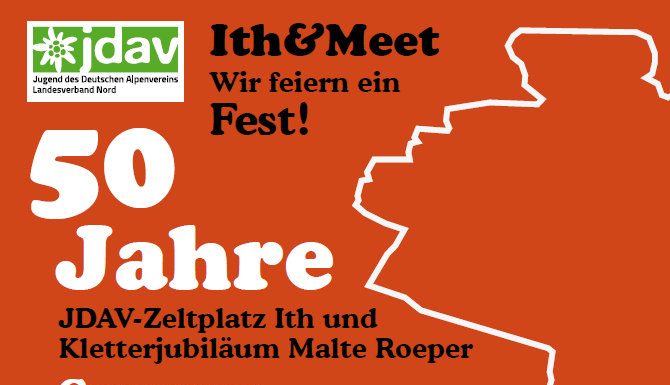The full size OS map of the British Isles at Cliffhanger 2009The Ordnance Survey „Open Data“ initiative is a government scheme releasing OS map data to the public that went ahead on the 1st of April this year. The plan was first mentioned on UKC back in November.Many outdoor activists and map producing organisations (such as climbing guidebook publishers) had high hopes for increased information for their maps, benefiting climbers and hill goers. This hasn't been the case.The final announcement stopped short of what had been expected. It was anticipated that the OS would release the data to enable competing map companies to produce versions of the popular 1:25,000 and 1: 50,000 maps, but these data sets were left out of the ?OS Open Data? initiative.The 1:10,000 Street view map is the most detailed map product that has been released and is useless once you get away from towns and cities as it has no footpath or relief information.?It was a ridiculous situation, as if the OS had copyrighted the countryside, made even more galling by the fact that our taxes had paid for the collection of this data in the first place.?However a positive development has been the removal of the 'derived data' restriction, where the OS claimed ownership of any product created using their data. Meaning if you traced an OS map and tailored it to your own needs in your own publication by adding and omitting key data, then the copyright of that map still belonged to the OS and you could only legally publish it with a very expensive licence from the OS.Even if you produced a map without using OS data, the more accurate a map you produced, the more difficult it would be to prove that you hadn't used the OS data, hence the greater the chance you would have to pay a licence. Winter navigation on ScafellIt was a ridiculous situation, as if the OS had copyrighted the countryside, made even more galling by the fact that our taxes had paid for the collection of some of this data in the first place.I first encountered the infamous 'derived data problem' way back in our early Rockfax guidebooks in the 1990s. As we developed the books we produced more and more maps. Initially these had been rough hand-drawn maps but as the quality of the books increased so did our need for better and more accurate maps, however I knew that I couldn't use OS Maps without paying a licence fee, and at that time, the licence fee was prohibitive for such a small business. So I continued to hand draw the maps for the crag approaches and use non-OS maps for the wider approaches. In the end I made agreements with several non-OS mapping companies to be able to use their maps for reference and we have muddled through, mostly through hard work of our guidebook researchers. Whilst this new OS development is welcome, it is unlikely that the end user of a Rockfax guidebook will notice any difference.The online implications are less clear at this stage but it does look reasonably positive that there could be some exciting new developments possible. The omission of the 1:25,000 and 1:50,000 maps from the free set means that there is little to excite at present that isn't better done by other currently available mapping solutions. Time will tell if the relaxed restrictions will allow cunning developers to make the most of this new found freedom.LINKS:Charles Arthur – Ex UKC Editor and key figure in the Free Our Data CampaignOS Website: OS OpenDataOriginal UKC News Report: UKC News Diesen Artikel inkl. Bilder auf UKClimbing.com anschauen
- Home
- News
- Videos
- Fotos
- Klettergebiete
- Unternehmen & Produkte
- Themen
- Themen beginnend mit 0-9
- Themen beginnend mit A
- Themen beginnend mit B
- Themen beginnend mit C
- Themen beginnend mit D
- Themen beginnend mit E
- Themen beginnend mit F
- Themen beginnend mit G
- Themen beginnend mit H
- Themen beginnend mit I
- Themen beginnend mit J
- Themen beginnend mit K
- Themen beginnend mit L
- Themen beginnend mit M
- Themen beginnend mit N
- Themen beginnend mit O
- Themen beginnend mit P
- Themen beginnend mit Q
- Themen beginnend mit R
- Themen beginnend mit S
- Themen beginnend mit T
- Themen beginnend mit U
- Themen beginnend mit V
- Themen beginnend mit W
- Themen beginnend mit X
- Themen beginnend mit Y
- Themen beginnend mit Z
- Routendatenbank
Climbing.de ist eine der ältesten deutschsprachigen Bergsportseiten im Internet.
Seit 1998 präsentiert Inhaber Martin Joisten, dessen Texte und Bilder in zahlreichen nationalen und internationalen Publikationen zu finden sind, aktuelle Informationen aus der Welt des Bergsports.
Seit 1998 präsentiert Inhaber Martin Joisten, dessen Texte und Bilder in zahlreichen nationalen und internationalen Publikationen zu finden sind, aktuelle Informationen aus der Welt des Bergsports.
Kontaktieren Sie uns: info@climbing.de
© Copyright 1998 - 2022 Climbing.de by Martin Joisten



![[VIDEO] Irmgard Braun: Record Breaking Rock Climber Who Gets Stronger Every Year Irmgard Braun: Record Breaking Rock Climber Who Gets Stronger Every Year (c) Hannah Morris Bouldering](https://www.climbing.de/wp-content/uploads/2025/11/youtube_MpAJEENfEjg-218x150.jpg)

![[VIDEO] The Challenge – Steve McClure The Challenge - Steve McClure (c) Petzl Sport](https://www.climbing.de/wp-content/uploads/2025/11/youtube_mfK9ynVsDvI-218x150.jpg)
![[VIDEO] Silence 9c/5.15d – The journey begins for Will Bosi Silence 9c/5.15d - The journey begins for Will Bosi (c) William Bosi](https://www.climbing.de/wp-content/uploads/2025/11/youtube_ujb7YRfE-7k-218x150.jpg)
![[VIDEO] Yosemite Crack Testpiece: Connor Herson on Magic Line Yosemite Crack Testpiece: Connor Herson on Magic Line (c) Fusis Films](https://www.climbing.de/wp-content/uploads/2025/10/youtube_h4GEt5iSZpA-218x150.jpg)
![[VIDEO] Hardest Trad Flash Ever | Adam Ondra | Lexicon E11 Hardest Trad Flash Ever | Adam Ondra | Lexicon E11 (c) Mammut](https://www.climbing.de/wp-content/uploads/2025/06/youtube_SAUyrDLG5xM-218x150.jpg)
![[VIDEO] Ian Dory's STRONG](https://www.climbing.de/wp-content/uploads/2014/12/vimeo_87907728-150x150.jpg)
![[VIDEO] Alex Honnold free solo in "El Sendero Luminoso"](https://www.climbing.de/wp-content/uploads/2014/12/youtube_Phl82D57P58-150x150.jpg)
![[VIDEO] Jochen Perschmann in "Mensch und Maschine" (FB 8b+)](https://www.climbing.de/wp-content/uploads/2014/12/vimeo_86232459-150x150.jpg)










